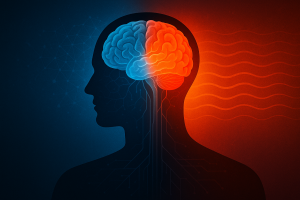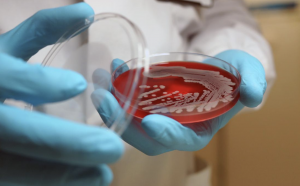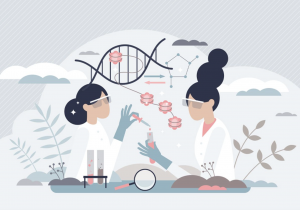People have fought to live longer for millennia. Recently, however, humans have turned to technology to solve this issue. The main attraction? CRISPR. This tool is used in many areas of life such as agriculture and health care. CRISPR holds the potential to not only allow humans to live longer, but to improve our overall quality of life.
CRISPR, or Clustered Regularly Interspaced Short Palindromic Repeats, is a gene editing tool that is used to locate, edit, cut, or replace specific sections of DNA. The most widely used application of CRISPR is plant modification. If you’ve ever been in a grocery store, you’ve likely seen products tagged with ‘GMO’. This stands for ‘genetically modified organisms’. These crops may have been cut by the molecular scissors known as CRISPR. CRISPR also enhances selective plant breeding. According to Innovative Genomics, “Because they are so precise, CRISPR tools avoid many of the negative side-effects of older plant breeding techniques.” Not only can CRISPR assist by easily adding helpful genes into the breeding process, but it can also remove unwanted DNA from pre-existing plants.
You may be wondering, how exactly does CRISPR work? To understand its full potential, it helps to see how CRISPR functions at the genetic level. As defined by Medline Plus, you first create a strand of RNA, a single-stranded molecule that carries genetic information from DNA to a cell’s ribosomes, with a guide sequence that can bind to a particular sequence in a cell’s data. This guide RNA has the ability to attach to the Cas9 enzyme, the primary enzyme used in CRISPR. Once it enters the cell, Cas9 finds the sequence outlined by the guide and cuts the DNA at the desired location. This process has allowed scientists to begin improving our food situation and cure diseases.
CRISPR has recently cured a patient at the Children’s Hospital of Philadelphia with a rare genetic disorder called severe carbamoyl phosphate synthetase 1 deficiency. This rare, inherited disorder causes toxic ammonia build up, especially in the brain. The patient, an infant named KJ, was successfully treated using CRISPR technology by correcting the faulty enzyme responsible for his disorder. This is just one instance where gene editing saved a life, but there are and will be many more cases like this one. CRISPR has shown promise to cure many other diseases, as well as already having cured a handful. Some examples of diseases cured by CRISPR are sickle cell, when red blood cells become crescent shaped; hemophilia, an inherited bleeding disorder that doesn’t allow the body to form clots; and muscular dystrophy, a combination of genetic disorders that cause progressive degeneration of the muscles as well as weakness.
CRISPR has the capability to improve the current organ donation scene. It is well-known that organ donors are widely desired in the science community. Hospitals always need organs in order to perform life-saving surgeries for patients. It is also well-known, however, that there has been a shortage of donors. CRISPR is currently being researched in hopes that xenotransplantation can be in our future. Xenotransplantation is when animal organs are given to humans in order to allow them to live longer. Pigs are the current candidate for transplantation due to the similar size of some organs to humans. CRISPR may allow humans to match up our DNA with the pig’s DNA, which would allow a human to use a pig’s heart, for example. This research has the potential to save millions of lives and get people off of the donor list and back into school, work, and to their families. There are some ethical concerns, however. Some people are worried about the life expectancy of humans with animal organs. The research thus far shows that people may live for less time with a pig heart vs a human heart. CRISPR, however, allows for a promise of longevity. CRISPR is able to modify pig DNA and create a heart fit for any human needs. This new technology will take people off of donor lists and return them safely to their families.
From agriculture to organ transplantation, CRISPR is already reshaping what’s possible. If humans truly wish to live longer, the best option is to turn to science. Through time and research, the development of CRISPR will allow incredible technological advancement, thus granting humans more time. CRISPR will bring people back home to their families and remove the anxiety of waiting for a donor, of wondering if you’ll have enough food to eat, or if your family member will ever get better. CRISPR is vital for the future of agriculture and health care.






Comments are closed.